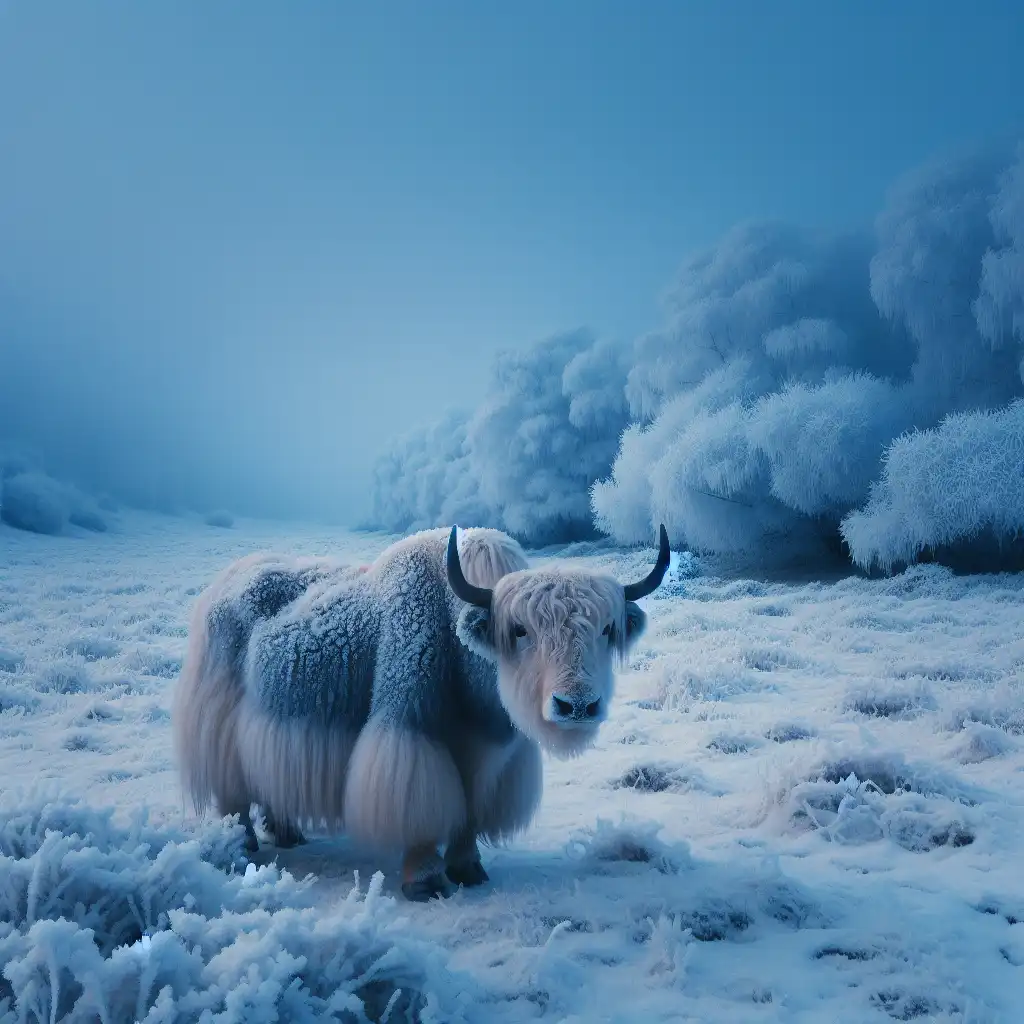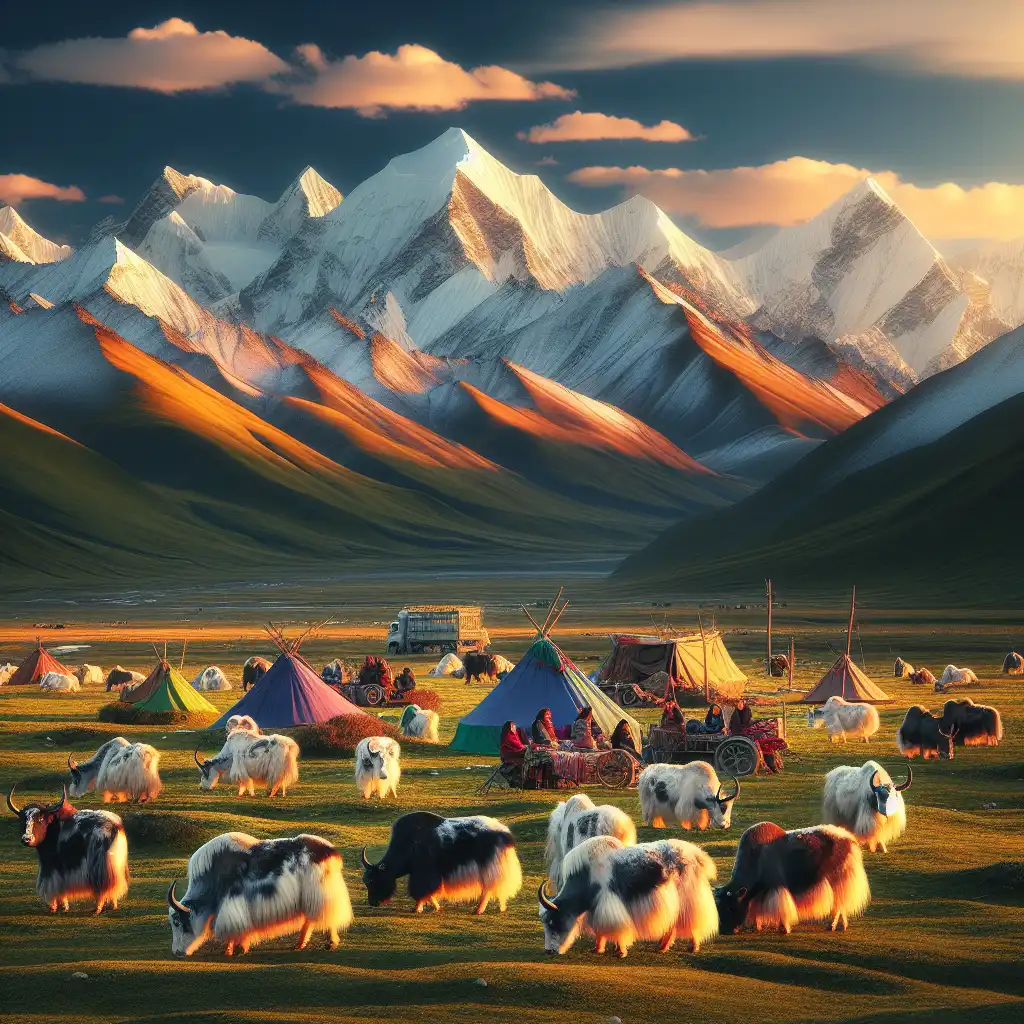
Yak
Central Asian Origin
Yaks are associated with high-altitude regions like Tibet and often symbolize life there.  Visiting the Himalayas, one can't miss the shaggy yak dotting the landscape.
Visiting the Himalayas, one can't miss the shaggy yak dotting the landscape.
Physical Attributes
Yaks have dense, woolly coats, which differ from regular cows, reflecting their cold habitats.  Despite the chill, the yak's coat keeps it warm.
Despite the chill, the yak's coat keeps it warm.
Cultural Importance
In their native regions, yaks are an important resource, providing milk, meat, and transport.  Yaks are integral to the nomadic lifestyle of Tibetans.
Yaks are integral to the nomadic lifestyle of Tibetans.